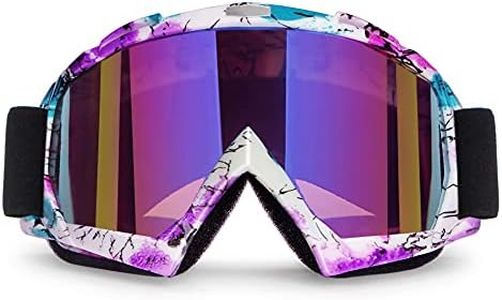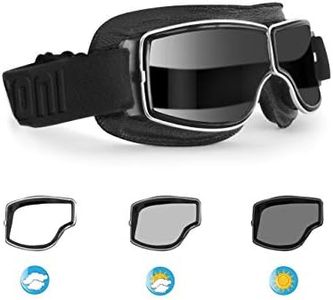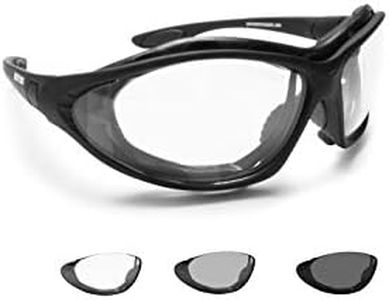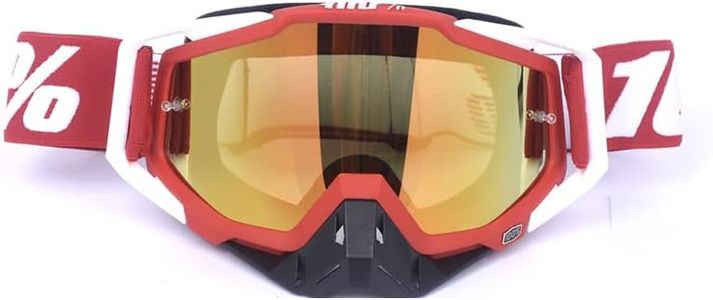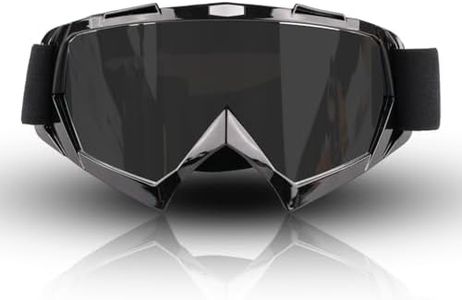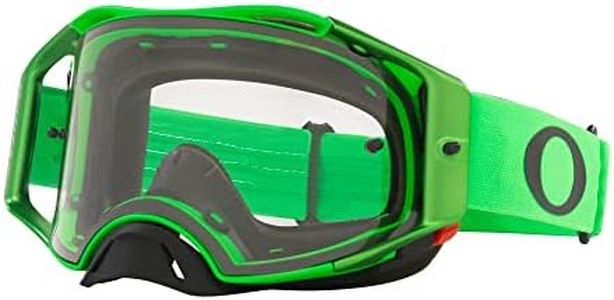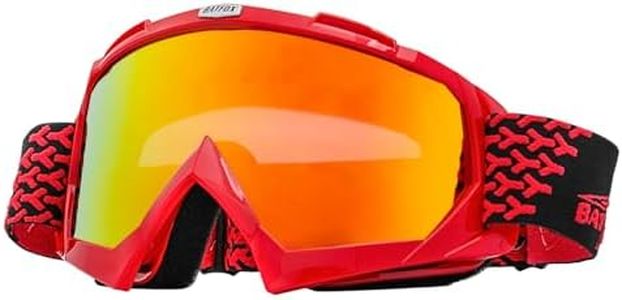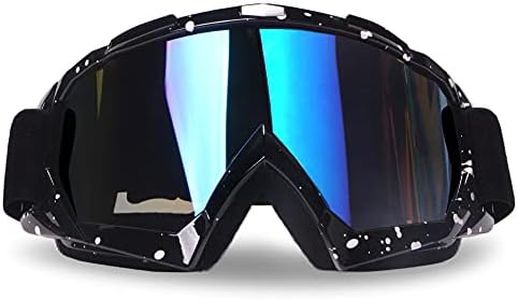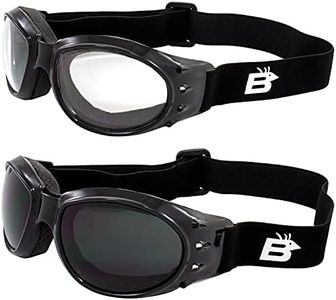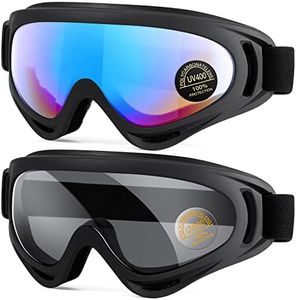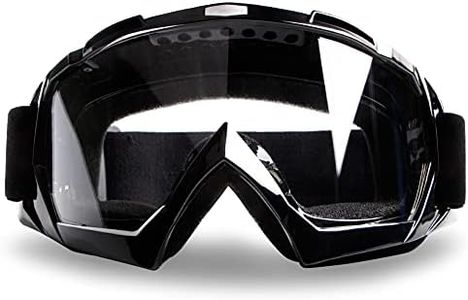We Use CookiesWe use cookies to enhance the security, performance,
functionality and for analytical and promotional activities. By continuing to browse this site you
are agreeing to our privacy policy
10 Best Motorcycle Goggles
From leading brands and best sellers available on the web.Buying Guide for the Best Motorcycle Goggles
When choosing motorcycle goggles, your main aim is to protect your eyes from wind, dust, debris, insects, and harmful UV rays while ensuring comfort and clear vision. It's important to find goggles that fit well with your helmet and are comfortable for extended rides. By understanding the key specifications of motorcycle goggles, you can choose a pair that best suits the kind of riding you do and the environments you encounter.Lens MaterialThe material of the lens is crucial for safety and clarity. Common materials include polycarbonate, acrylic, and glass. Polycarbonate lenses are popular because they're lightweight and highly impact-resistant, making them ideal for protection against debris. Acrylic lenses are usually less expensive but can scratch more easily. Glass offers excellent clarity but is heavier and can shatter on impact. If you ride in tough conditions or at high speeds, opt for polycarbonate. For casual or low-risk riding, acrylic can suffice, but be mindful of scratches. Glass is rarely used in modern goggles due to safety concerns.
UV ProtectionUV protection prevents harmful ultraviolet rays from damaging your eyes, which is especially important during sunny rides or at high altitudes. Some lenses offer basic UV protection, while others are rated for up to 100% UVA and UVB blocking. If you frequently ride in strong sunlight, prioritize goggles with full UV protection. For short, occasional rides, basic protection may be sufficient, but it's always safest to go for high UV shielding.
VentilationVentilation refers to small features in the goggle frame that allow airflow, preventing fogging and increasing comfort. Good ventilation helps keep your vision clear but should not let in too much dust or debris. If you often ride in cold or humid environments, look for goggles with effective ventilation systems to combat fogging. However, if you mostly ride in dusty or sandy places, you may prefer minimal or filtered vents to keep dirt out.
Fit and ComfortFit and comfort are determined by the padding, strap adjustability, and how the goggles sit on your face and with your helmet. The padding should be soft and hypoallergenic, forming a good seal without causing pressure points. Adjustable straps help ensure the goggles stay in place even during vigorous riding. Make sure to try on goggles with your helmet to check compatibility and comfort. If you ride long distances, invest more attention in high-quality padding and snug fit to avoid discomfort.
Lens Tint or ColorLens tint or color affects how well you see in different lighting conditions. Clear lenses are best for night or low-light rides. Dark or mirrored tints reduce glare in bright sunlight. Yellow or amber lenses can enhance contrast in overcast or foggy conditions. To choose the right tint, think about when and where you'll be riding most—get clear for night or multipurpose use, dark for daytime, and specialized tints for specific weather challenges.
Anti-Fog CoatingAn anti-fog coating is a special treatment on the lens that helps prevent condensation and fogging, which can happen due to temperature differences inside and outside the goggles. This feature is especially important if you ride in cold, humid, or rapidly changing environments. Riders who often encounter fogging should definitely choose goggles with a reliable anti-fog treatment, while those in dry or warm areas may consider it less essential.
Impact ResistanceImpact resistance ensures the goggles can withstand hits from rocks, insects, or other flying debris. Goggles are usually rated for certain safety standards which indicate their ability to protect your eyes. If you do off-road riding or often ride in areas with lots of airborne debris, prioritize high impact resistance. For city or casual rides, moderate resistance may be enough.
